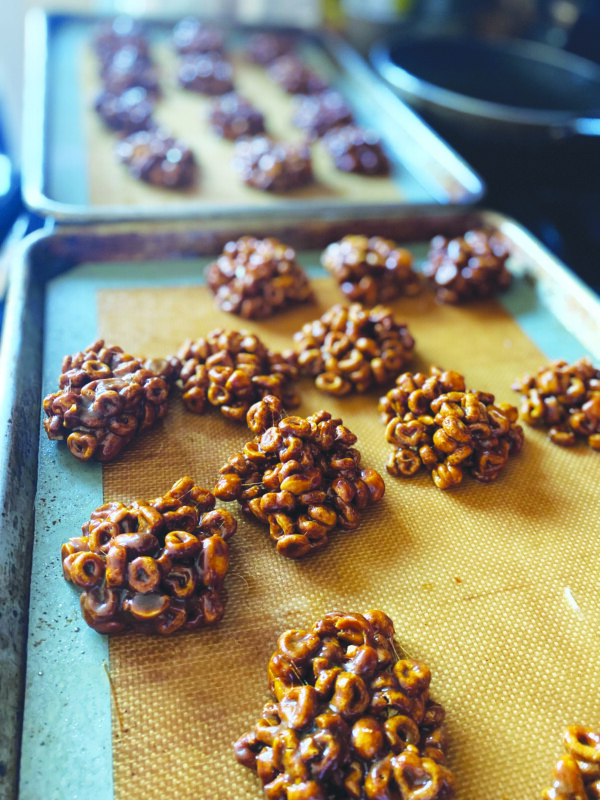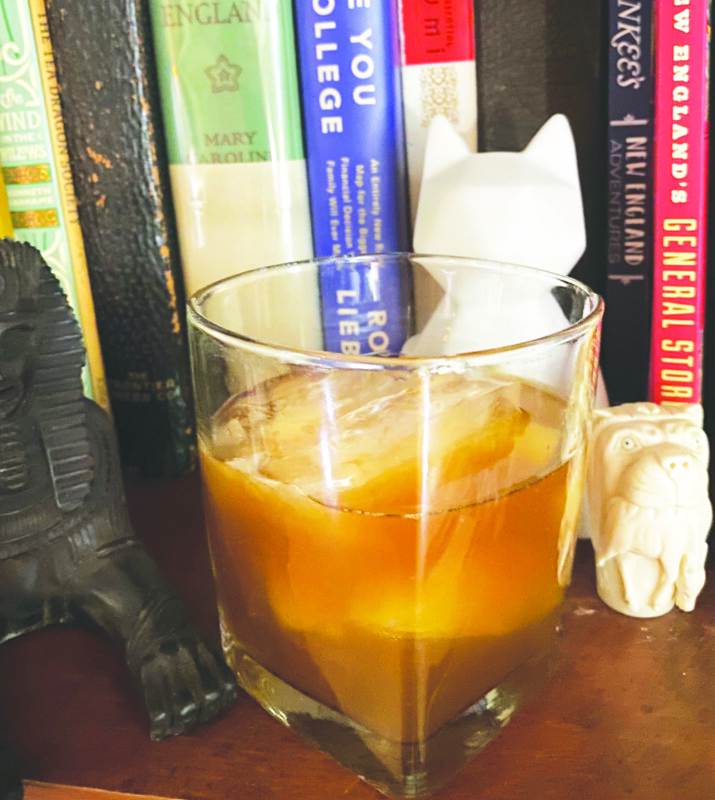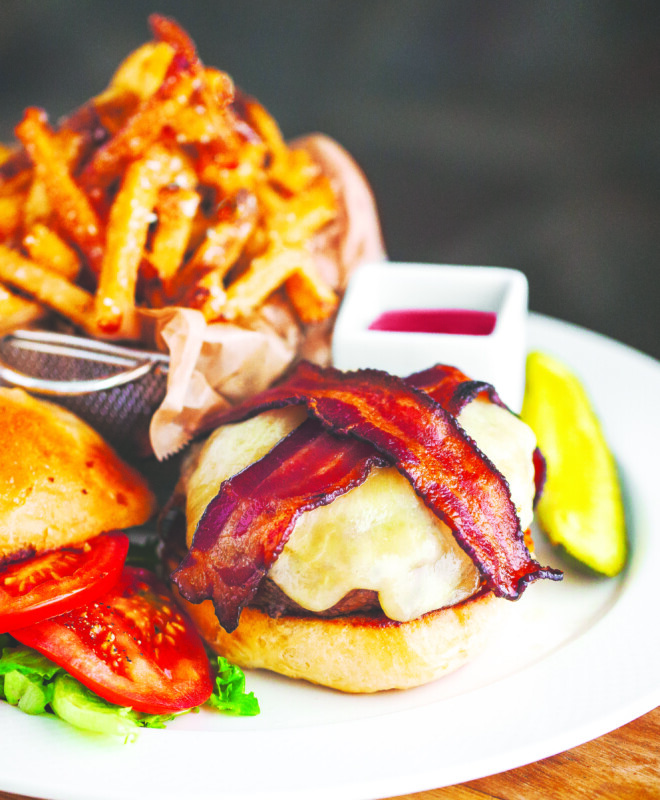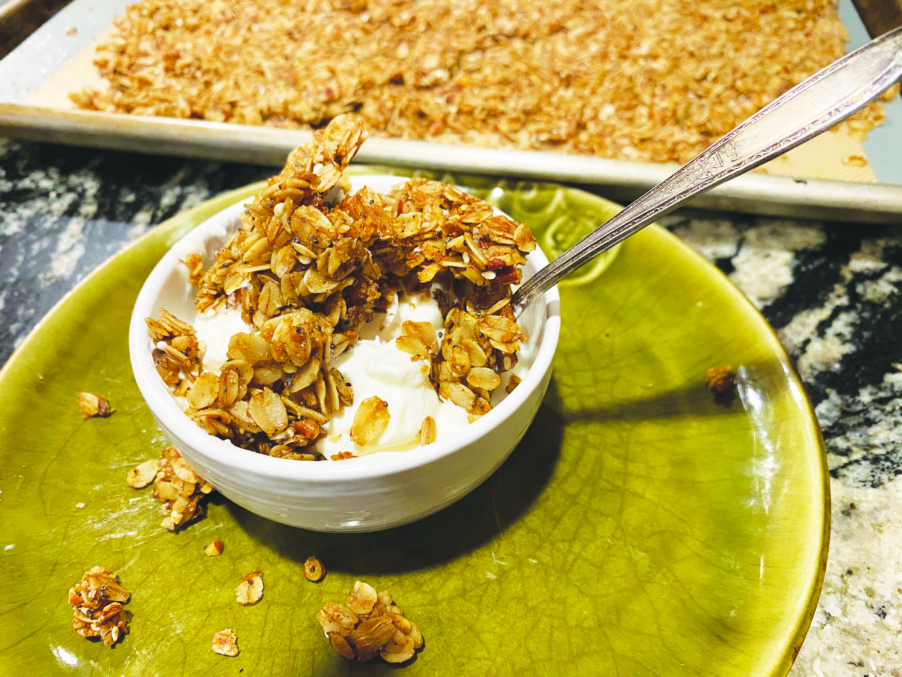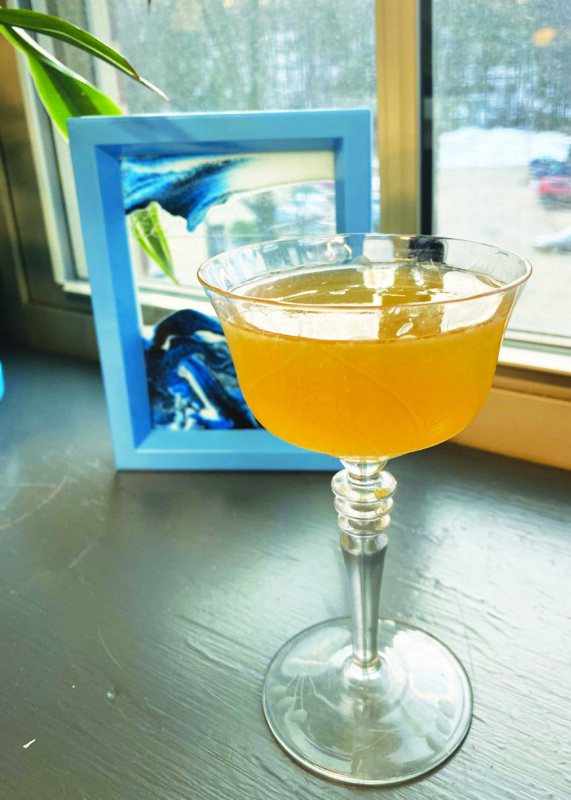from the 1950 Betty Crocker Cookbook
4 cups (124 g) Cheerios – how long have these been heart-shaped?
1½ cups (210 g) salted roast peanuts
1½ cups (319 g) brown sugar
¾ cup (255 g) molasses
½ cup (113 g) water
4 teaspoons vinegar
1/8 teaspoon cream of tartar
1½ teaspoons baking soda
In a large greased bowl, combine the cereal and the peanuts.
In a large saucepan, combine the brown sugar, molasses, water, vinegar, and cream of tartar.
Over medium heat, bring the molasses mixture to a boil, stirring occasionally. Continue boiling, until the mixture comes to a temperature of 250ºF — this is what no-nonsense grandmothers and aunts used to call the “soft-ball” stage.
At this point you will need some way of measuring the temperature of the hot molasses syrup. One option is an old-fashioned frying/candy thermometer. Another is a whisk with an integrated thermometer — I like this option a lot; it allows you to multitask. You can continue to stir and still keep track of the temperature.
I would add a note of caution, however. There are two parts to this whisk/thermometer — it’s a probe thermometer that is pushed through a small hole into the whisk component. The electronic thermometer doesn’t like to get wet, so as I was cleaning up after making this candy, I congratulated myself on remembering to pull the two components apart before washing them. This turned out to be difficult. The molasses candy was very sticky and had set up more firmly than I expected. I decided to pull with more effort, only to rip the whole thing in two. As I stared down at the loose wires jutting out from the broken thermometer base, I swear they looked judgmentally at me for my betrayal.
As soon as the molasses syrup reaches 250ºF, remove it immediately from the heat, and stir the baking soda into the mixture as quickly as possible. It will foam up and look really cool.
Pour the hot, foamy syrup over the cereal-peanut mixture, and stir to combine with a well-greased spoon. The key term from this point forward will be “well-greased.”
Let the mixture sit and cool for a few minutes, which will give you a chance to grease up your hands.
Using your well-greased hands, form the cereal mixture into 2-inch patties and press them down on a well-greased silicone mat or a well-greased sheet of parchment paper. As greasy as this whole endeavor is, when you get about three quarters of the way through the patty-making process you will wish you had greased everything even a little bit more.
Let the patties sit for half an hour or so before eating any of them, and let the remainder harden up overnight.
A note about cleaning up: The best tool for cleaning your mixing bowl and saucepan seems to be a stiff-bristled kitchen brush. You might be tempted to use the green scrubby part of a sponge, but you’ll end up going through several of them, which you will end up having to throw away. A brush will not only make reasonably fast work of cleaning up; it will also clean itself of any candy residue. This brush may become your new best friend. Name him.
If you haven’t run the gauntlet of candy-making before, this is a pretty good beginner’s project. This is a good candy, with a low effort-to-reward ratio. In 1950 Betty and her ghost writer wrote that these candies are “like caramel corn,” which they are, in a way. There’s no actual popcorn involved, of course, but the Cheerios and the peanuts stay crunchy, without the annoying hard bits of corn kernels that stick in your teeth with actual caramel corn. These are chewy candies that taste mildly of molasses, Cheerios and salt. They are excellent with a mug of tea.
They just need a more exciting name. Ernesto, perhaps? Bruno? Fanaka, Queen of the Amazons?
John Fladd is a veteran Hippo writer, a father, writer and cocktail enthusiast, living in New Hampshire.
Featured photo: Molasses Patties. Photo by John Fladd.

